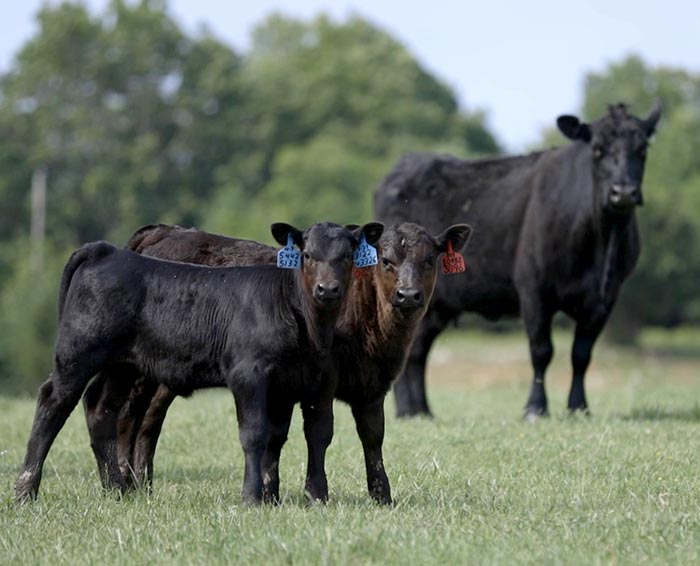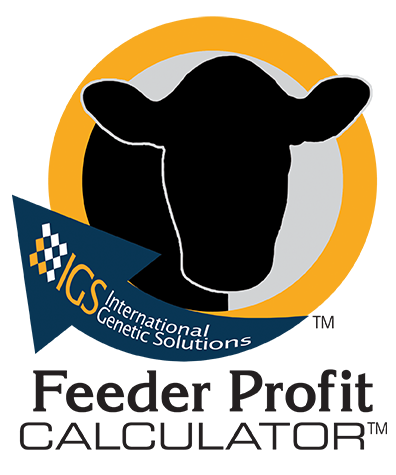Feeder Profit Calculator (FPC)

The Problem:
Imagine you had to find bulls for your operation but you didn’t know any breeders, nobody used EPD or even shared actual data. It’s obvious to anyone interested in building quality cattle and maximizing profit this would be a major blow to the bottom line.
Yet, this is how the feeder calf business exists today. Frequently, when purchasing quality feeder calves, we can receive crucial information regarding environmental factors such as management and health protocols, weights, etc. However, when it comes to genetic awareness, color and polled status are often asked to substitute for true knowledge. A common scenario, and at times the best-case scenario, is that the calf buyer has a previous relationship with the seller and has owned and experienced the performance of the seller’s calves before. In more rare cases, we may have some information on the seller’s bull purchases. Again, this is a powerful step forward. It provides at least some insight into a portion of the genetics within the program. However, in a data-driven world, this level of genetic awareness is woefully inadequate. Especially since the financial stakes for feeder calf procurement are even higher than the stakes for bull procurement. Understandably, most large cattle buyers have the technology to estimate genetic and environmental performance on feeder cattle but that information is not public and, for obvious reasons, is kept to those companies. Therefore, price discovery as we know it today most often does not take account the actual performance potential of a producer’s feeder cattle.

The Problem:
Imagine you had to find bulls for your operation but you didn’t know any breeders, nobody used EPD or even shared actual data. It’s obvious to anyone interested in building quality cattle and maximizing profit this would be a major blow to the bottom line.
Yet, this is how the feeder calf business exists today. Frequently, when purchasing quality feeder calves, we can receive crucial information regarding environmental factors such as management and health protocols, weights, etc. However, when it comes to genetic awareness, color and polled status are often asked to substitute for true knowledge. A common scenario, and at times the best-case scenario, is that the calf buyer has a previous relationship with the seller and has owned and experienced the performance of the seller’s calves before. In more rare cases, we may have some information on the seller’s bull purchases. Again, this is a powerful step forward. It provides at least some insight into a portion of the genetics within the program. However, in a data-driven world, this level of genetic awareness is woefully inadequate. Especially since the financial stakes for feeder calf procurement are even higher than the stakes for bull procurement. Understandably, most large cattle buyers have the technology to estimate genetic and environmental performance on feeder cattle but that information is not public and, for obvious reasons, is kept to those companies. Therefore, price discovery as we know it today most often does not take account the actual performance potential of a producer’s feeder cattle.
Feeder Profit Calculator
The Solution:

Feeder Profit Calculator

The Solution:

Feeder Profit Calculator
The Future:
Capitalizing on novel technology usually requires a tremendous learning curve and a major outlay of dollars. Not this time! The IGS Feeder Profit Calculator is unique. It will offer a level of genetic awareness of crossbred feeder calves that have not been previously possible in the beef business. The IGS science team, the IGS partner associations, and the world’s largest beef genetic evaluation database allow the IGS FPC to be delivered at no cost to producers. That is correct. No Cost!
Beef producers looking for a transparent and straightforward assessment of their calves will harness the power of IGS by simply making a call, sending an email, or visiting the IGS website. IGS and/or breed association personnel will request information on herd health, basic management protocols, the bull battery used in previous years, and insight into the makeup of the cowherd. The more thorough the inputs from the producer, the better the predictive ability of the FPC. While individual sire identification isn’t required, identification of the bulls used in the operation is required. For producers who have an interest in having their calves evaluated through the IGS FPC please contact one of the IGS breed partners or contact beef@internationalgeneticsolutions. com. Cattle feeders who are interested in integrating the capabilities of the IGS FPC into their purchasing decisions please use the same email.
